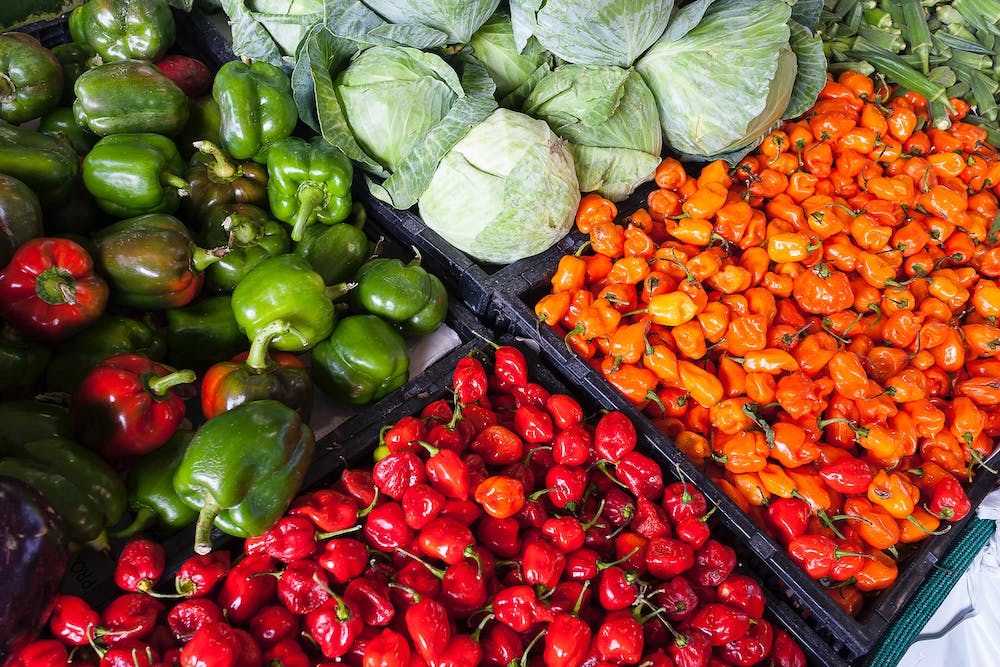Do you ever feel confused or overwhelmed by the labels on the food products you buy? Do you know what all those numbers, percentages, and ingredients mean? If not, you’re not alone. Many people struggle to understand food labels and how they relate to their health and nutrition.
 In this blog post, we’ll help you decode the ingredients and nutritional information on food labels, so you can make informed choices about what you eat. We’ll also give you some tips on how to avoid common pitfalls and misleading claims that may trick you into buying unhealthy or low-quality products.
In this blog post, we’ll help you decode the ingredients and nutritional information on food labels, so you can make informed choices about what you eat. We’ll also give you some tips on how to avoid common pitfalls and misleading claims that may trick you into buying unhealthy or low-quality products.
 Ingredients List
Ingredients List
The ingredients list tells you what’s in the food product, in order of weight. The first ingredient is the one that makes up the largest part of the product, and the last ingredient is the one that makes up the smallest part. The ingredients list can help you identify if the product contains any allergens, additives, preservatives, artificial colors, flavors, or sweeteners that you may want to avoid.
 Some things to look out for in the ingredients list are:
Some things to look out for in the ingredients list are:
 – Long or unfamiliar words that may indicate chemical or synthetic substances
– Long or unfamiliar words that may indicate chemical or synthetic substances
– Multiple forms of sugar, such as glucose, fructose, sucrose, maltose, dextrose, corn syrup, honey, molasses, etc.
– Hydrogenated or partially hydrogenated oils, which are sources of trans fats that can raise your bad cholesterol and lower your good cholesterol
– Sodium nitrite or sodium nitrate, which are used as preservatives in processed meats and can increase your risk of cancer
– Monosodium glutamate (MSG), which is used as a flavor enhancer and can cause headaches, nausea, or allergic reactions in some people
– Artificial colors or flavors, which may have negative effects on your mood, behavior, or health
 Nutritional Information
Nutritional Information
The nutritional information tells you how much energy (calories), protein, fat, carbohydrate, fiber, sugar, sodium, and other nutrients are in a serving of the product. The nutritional information can help you compare different products and choose the ones that fit your dietary needs and goals.
 Some things to pay attention to in the nutritional information are:
Some things to pay attention to in the nutritional information are:
 – Serving size and servings per container: These tell you how much of the product is considered one serving and how many servings are in the package. Be careful not to assume that the whole package is one serving. You may need to multiply the nutritional values by the number of servings you consume.
– Serving size and servings per container: These tell you how much of the product is considered one serving and how many servings are in the package. Be careful not to assume that the whole package is one serving. You may need to multiply the nutritional values by the number of servings you consume.
– Calories: These tell you how much energy you get from one serving of the product. Calories are not necessarily bad, but they should match your activity level and energy needs. If you consume more calories than you burn, you may gain weight. If you consume fewer calories than you burn, you may lose weight.
– Percent Daily Value (%DV): These tell you how much of a nutrient one serving of the product provides compared to the recommended daily intake for an average adult. For example, if one serving of a product has 10% DV of calcium, it means it provides 10% of the amount of calcium you need in a day. The %DV can help you see if a product is high or low in a certain nutrient. Generally, 5% DV or less is low and 20% DV or more is high.
– Fat: This tells you how much fat is in one serving of the product. Fat is an essential nutrient that provides energy and helps your body absorb vitamins. However, not all fats are created equal. You should limit your intake of saturated fats and trans fats, which can raise your bad cholesterol and increase your risk of heart disease. You should choose products that have more unsaturated fats, which can lower your bad cholesterol and improve your heart health.
– Carbohydrate: This tells you how much carbohydrate is in one serving of the product. Carbohydrate is an important nutrient that provides energy for your brain and muscles. However, not all carbohydrates are created equal. You should limit your intake of simple carbohydrates or added sugars, which can spike your blood sugar and lead to weight gain. You should choose products that have more complex carbohydrates or fiber, which can stabilize your blood sugar and keep you full longer.
– Sodium: This tells you how much sodium is in one serving of the product. Sodium is an essential mineral that helps regulate your fluid balance and blood pressure. However, too much sodium can cause high blood pressure and increase your risk of stroke and kidney disease. You should limit your intake of sodium to no more than 2,300 mg per day (or less if you have high blood pressure or other health conditions). You should choose products that have less than 140 mg of sodium per serving.
 Tips for Reading Food Labels
Tips for Reading Food Labels
Here are some tips to help you read food labels more effectively:
 – Read both the ingredients list and the nutritional information to get a complete picture of what’s in the product.
– Read both the ingredients list and the nutritional information to get a complete picture of what’s in the product.
– Compare different products based on their ingredients and nutritional values to find the best option for you.
– Look for products that have fewer and simpler ingredients, more whole foods, and less processed or artificial ingredients.
– Look for products that have lower calories, saturated fats, trans fats, sugars, and sodium, and higher protein, fiber, unsaturated fats, and other nutrients.
– Look for products that have health claims that are backed by scientific evidence and approved by the Food and Drug Administration (FDA). Be wary of products that have vague or exaggerated claims that are not verified by the FDA.
– Look for products that have the USDA organic seal, which means they are produced without synthetic pesticides, fertilizers, hormones, antibiotics, or genetically modified organisms (GMOs).
– Look for products that have the Non-GMO Project Verified seal, which means they are tested and verified to be free of GMOs.
– Look for products that have the Certified Gluten-Free seal, which means they are tested and verified to be free of gluten (a protein found in wheat, barley, and rye that can cause digestive problems for some people).
– Look for products that have other seals or certifications that match your preferences or values, such as Fair Trade, Rainforest Alliance, Animal Welfare Approved, Certified Vegan, Certified Kosher, etc.
 Conclusion
Conclusion
Reading food labels can help you make smarter choices about what you eat and how it affects your health and nutrition. By decoding the ingredients and nutritional information on food labels, you can avoid common pitfalls and misleading claims that may trick you into buying unhealthy or low-quality products. You can also compare different products and find the ones that fit your dietary needs and goals. Remember to look for products that have fewer and simpler ingredients, more whole foods, less processed or artificial ingredients, lower calories, saturated fats, trans fats, sugars, and sodium, higher protein, fiber, unsaturated fats, and other nutrients. You can also look for products that have health claims that are backed by scientific evidence and approved by the FDA. You can also look for products that have seals or certifications that match your preferences or values. By reading food labels carefully and critically, you can take charge of your health and nutrition. Happy shopping!





